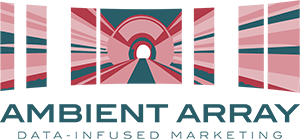Are you finding that your digital advertising campaigns consistently exceed budget expectations, leaving you wondering where all the hidden costs come from and how to plan more accurately? This article was made for you!
Most businesses approach digital advertising budget planning by focusing solely on media spend—the actual cost of running ads on platforms like Google, Facebook, or LinkedIn. However, this narrow view creates significant blind spots that lead to budget overruns and disappointing returns on investment. True total ownership costs encompass a complex ecosystem of direct and indirect expenses including platform fees, creative development, management time, technology tools, testing costs, and ongoing optimization efforts. Understanding and planning for these comprehensive costs is essential for creating realistic budgets that deliver sustainable advertising success while avoiding the financial surprises that derail marketing strategies.
Breaking Down the Hidden Components of Digital Advertising Costs
Beyond the obvious media spend, digital advertising involves numerous cost components that many businesses overlook during budget planning. Creative development represents a significant expense that includes graphic design, copywriting, video production, and ongoing creative refreshes needed to combat ad fatigue. Professional creative work represents a substantial portion of total advertising investment, especially for businesses that prioritize high-quality visual content and personalized messaging across multiple audience segments.
Technology and tool costs form another substantial component of total ownership expenses. Most effective digital advertising campaigns require multiple software subscriptions for campaign management, analytics tracking, competitor research, keyword planning, creative development, and landing page optimization. These tools can range from $50 to $500+ per month each, and successful campaigns often utilize multiple platforms simultaneously. Additionally, tracking and attribution technologies, conversion optimization tools, and customer relationship management systems add layers of expense that must be factored into comprehensive budget planning.
Management and labor costs represent perhaps the most underestimated component of digital advertising total ownership costs. Whether handled internally or outsourced to agencies, effective campaign management requires significant time investment for strategy development, campaign setup, ongoing optimization, performance analysis, and reporting. Internal management costs include not just the direct salary of marketing personnel, but also the opportunity cost of time spent on advertising rather than other business activities. Agency management fees represent a substantial ongoing expense that varies based on campaign complexity and service requirements.
Strategic Budget Allocation Across Campaign Elements
Effective digital advertising budget planning requires strategic allocation across all campaign elements rather than simply dividing money between different advertising platforms. A well-balanced budget prioritizes direct media spend while ensuring adequate investment in creative development, tools and technology, and testing activities. However, these allocations should be adjusted based on industry requirements, campaign complexity, and business maturity.
Creative budget allocation deserves particular attention because creative fatigue can quickly erode campaign performance. Planning for regular creative refreshes—typically every 4-8 weeks depending on audience size and frequency—prevents performance decline and maintains audience engagement. This includes budgeting for both major creative overhauls and minor variations like headline testing, image swaps, and call-to-action adjustments that keep campaigns fresh without requiring complete redesigns.
Testing budgets enable continuous campaign improvement through systematic experimentation with audiences, creative approaches, bidding strategies, and landing page variations. Allocating dedicated resources specifically for testing creates opportunities to discover more effective approaches while minimizing risk to core campaign performance. This dedicated testing allocation prevents the common mistake of under-investing in optimization activities that could significantly improve overall campaign returns.
Long-Term Cost Considerations and Scalability Planning
Digital advertising budget planning must account for long-term cost evolution and scalability requirements that affect total ownership expenses over time. As campaigns mature and audiences become saturated, cost per acquisition typically increases, requiring either increased budget allocation or strategic pivots to maintain performance levels. Planning for these natural cost escalations prevents budget shortfalls and enables proactive strategy adjustments.
Platform dependency risks represent another long-term cost consideration that affects budget planning. Relying heavily on single advertising platforms creates vulnerability to policy changes, algorithm updates, or competitive pressure that can dramatically increase costs or reduce effectiveness. Diversification across multiple platforms and marketing channels requires additional budget allocation but provides essential risk mitigation that protects long-term marketing investments.
Compliance and legal costs increasingly affect digital advertising budgets as privacy regulations evolve and enforcement intensifies. GDPR, CCPA, and similar regulations require investment in compliance technology, legal consultation, and process modifications that add ongoing costs to digital advertising operations. Additionally, trademark monitoring, competitive legal issues, and intellectual property protection represent potential cost factors that comprehensive budget planning should address.
Measuring and Optimizing Total Cost of Ownership
Comprehensive measurement systems enable accurate tracking of total ownership costs and identification of optimization opportunities that improve overall campaign efficiency. This requires implementing attribution models that connect all cost components to specific business outcomes, enabling calculation of true return on advertising investment that accounts for complete cost structures rather than just media spend.
Regular cost audits help identify inefficiencies and redundancies in tool usage, creative development processes, and management activities. Many businesses discover they’re paying for overlapping services or underutilizing expensive tools that could be replaced with more cost-effective alternatives. Quarterly reviews of all advertising-related expenses often reveal significant cost reduction opportunities without impacting campaign performance.
Advanced budget planning incorporates scenario modeling that prepares for various performance outcomes and market conditions. This includes developing contingency budgets for scaling successful campaigns, pivoting underperforming initiatives, and responding to competitive pressures or market opportunities that require rapid budget reallocation across different campaign elements and cost categories.
***
To get a #ProfessionalGradeMarketing team working for you, contact Ambient Array today.


